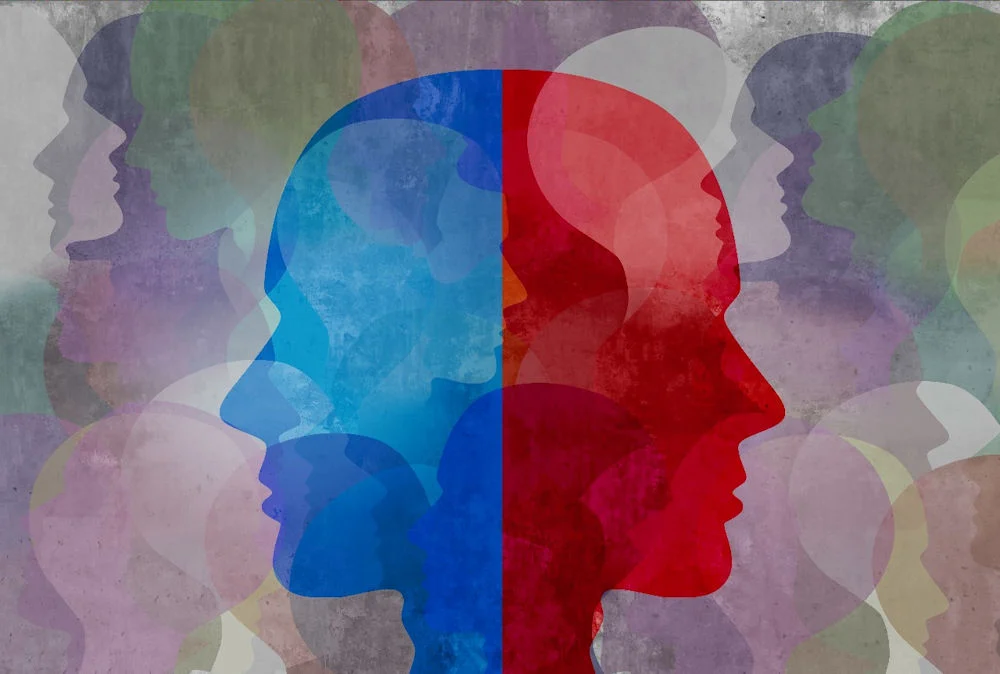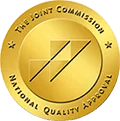There are several types of bipolar disorder, each with varying patterns of mood episodes and severity:
- Bipolar I Disorder:Involves at least one manic episode, which may be preceded or followed by depressive episodes.
- Bipolar II Disorder:Involves at least one major depressive episode and one hypomanic episode (a less severe form of mania).
- Cyclothymic Disorder (Cyclothymia):Involves numerous periods of hypomanic and depressive symptoms that don’t meet full criteria for episodes.
- Other Specified and Unspecified Bipolar Disorders:Diagnoses that do not fit the above categories but still involve abnormal mood elevation.

Bipolar disorder affects approximately 2.8% of U.S. adults each year. With proper diagnosis and a combination of therapy programs—including medication, psychotherapy, and lifestyle adjustments—individuals can manage symptoms effectively and lead fulfilling lives.
What Are the Signs and Symptoms of Bipolar Disorder?
Manic or Hypomanic Episode Symptoms:
- Increased energy, activity, or restlessness
- Elevated or irritable mood
- Racing thoughts and rapid speech
- Decreased need for sleep
- Impulsivity and poor decision-making (e.g., spending sprees or risky behavior)
- Inflated self-esteem or grandiosity
Depressive Episode Symptoms:
- Persistent sadness, hopelessness, or emptiness
- Fatigue or loss of energy
- Difficulty concentrating or making decisions
- Sleep disturbances (insomnia or oversleeping)
- Changes in appetite or weight
- Thoughts of death or suicide
Bipolar disorder symptoms can emerge gradually or appear suddenly, and episodes may last days to weeks. Recognizing these patterns is essential for early diagnosis and treatment. Left untreated, bipolar symptoms can disrupt relationships, employment, and quality of life, but with proper care, many individuals achieve lasting stability.
What Causes Bipolar Disorder?
Key contributing factors include:
Bipolar disorder tends to run in families. A person with a first-degree relative (such as a parent or sibling) who has the disorder has a higher risk of developing it.
Neuroimaging studies show differences in the structure and activity of certain brain regions involved in mood regulation, though the significance is still being explored.
Abnormal levels of neurotransmitters like serotonin, dopamine, and norepinephrine may impact mood stability and emotional processing.
Traumatic experiences, significant loss, or prolonged stress can trigger mood episodes in individuals predisposed to the disorder.
Drug or alcohol misuse can worsen symptoms or trigger the onset of bipolar disorder in some individuals.

While no single cause explains bipolar disorder, understanding these risk factors can support early intervention and targeted treatment strategies that foster long-term stability.
What Happens in a Bipolar Disorder Treatment Program?
Treatment typically includes medication management to regulate mood and prevent future episodes. Psychotherapy plays a central role, with approaches like Cognitive Behavioral Therapy (CBT) and Dialectical Behavior Therapy (DBT), along with psychoeducation aimed at helping clients recognize early warning signs, manage triggers, and develop healthy thought patterns.
Many programs offer individual therapy, group therapy, and family support services, creating a comprehensive care model that promotes connection and resilience. Holistic therapies such as mindfulness, exercise, and nutritional counseling may also be integrated to support overall wellness.
Whether in residential, outpatient, or partial hospitalization settings, bipolar disorder treatment programs focus on creating stability, building life skills, and empowering individuals to manage symptoms effectively and live more balanced, fulfilling lives.
What Are the Benefits of a Bipolar Disorder Treatment Program?
One major benefit is consistent symptom management through medication and therapy, which helps regulate mood swings and reduce the frequency of manic and depressive episodes. Participants also gain a better understanding of their condition through psychoeducation, empowering them to recognize early warning signs and take proactive steps.
Emotional and social support is another core component, with group therapy and peer interaction reducing isolation and promoting connection. Family involvement further strengthens communication and support systems at home. In addition, programs often incorporate lifestyle interventions—such as stress management, nutrition, and sleep hygiene—to enhance overall well-being.
Ultimately, mental health treatment fosters resilience, improves quality of life, and equips individuals with tools to sustain long-term recovery.
| Benefit | Description |
| Mood stabilization | Reduces the intensity and frequency of episodes |
| Psychoeducation | Increases understanding of the disorder |
| Emotional and social support | Builds community, reduces isolation |
| Personalized therapy | Targets unique needs with evidence-based interventions |
| Holistic wellness tools | Supports overall mental, emotional, and physical health |
What Are the Statistics of Individuals with Bipolar Disorder in Pennsylvania?
Access to care remains a concern. About 15.4% of adults reported unmet mental health needs, often due to cost, stigma, or provider shortages. Rural areas face even greater challenges, with 41% fewer mental health resources than urban regions. These disparities highlight the importance of expanding treatment access and awareness, especially for complex conditions like bipolar disorder.
Here’s a snapshot of key mental health statistics in Pennsylvania:
|
Statistic |
Value |
|
Adults with any mental illness |
22.8% (≈1.83 million) |
| Adults with serious mental illness |
7.8% (≈626,000) |
|
Adults with unmet mental health needs |
15.4% |
| Mental health providers per 100,000 people |
225 (above the national median of 211) |
|
Rural areas with fewer mental health resources |
41% fewer than urban areas |
These figures underscore the need for comprehensive, accessible bipolar disorder treatment programs across the state.
Arkview Offers a Bipolar Disorder Treatment Program in Pennsylvania
Key features of Arkview’s bipolar disorder treatment program include:
- Therapy programs:Individual, group, and family therapy using CBT, DBT, and trauma-informed care.
- Holistic approaches:Yoga, mindfulness, nutrition planning, and art therapy to support whole-person healing.
- Dual diagnosis treatment:Integrated care for co-occurring mental health and substance use disorders.
- Multiple levels of care: Residential, partial hospitalization (PHP), and intensive outpatient (IOP) options for flexible support.
Our team of licensed clinicians and dedicated support staff is deeply committed to helping individuals achieve emotional balance, mental clarity, and lasting wellness. With extensive experience in treating bipolar disorder and co-occurring conditions, our professionals provide compassionate, evidence-based care tailored to each client’s unique needs. From the moment you arrive, you’ll be supported by a multidisciplinary team that includes therapists, medical professionals, and recovery specialists—all working together to guide your healing journey.
Whether you’re seeking residential treatment, outpatient support, or dual diagnosis care, Arkview offers a safe, structured environment where recovery is possible. Our program integrates therapy, medication management, and holistic services to help you regain control and build resilience.
Ready to take the first step? Contact us today to speak with a caring specialist and begin your journey toward stability and wellness. At Arkview, healing isn’t just possible—it’s personal. Let us walk beside you.
https://pmc.ncbi.nlm.nih.gov/articles/PMC10381462/
https://pmc.ncbi.nlm.nih.gov/articles/PMC4149389/
https://pmc.ncbi.nlm.nih.gov/articles/PMC6116765/
https://pmc.ncbi.nlm.nih.gov/articles/PMC7681156/
https://pmc.ncbi.nlm.nih.gov/articles/PMC6175457/
https://pmc.ncbi.nlm.nih.gov/articles/PMC4695242/
https://pmc.ncbi.nlm.nih.gov/articles/PMC11203972/
https://www.nimh.nih.gov/health/statistics/bipolar-disorder
https://www.nimh.nih.gov/health/statistics/mental-illness
https://www.nimh.nih.gov/health/publications/bipolar-disorder






















